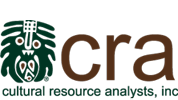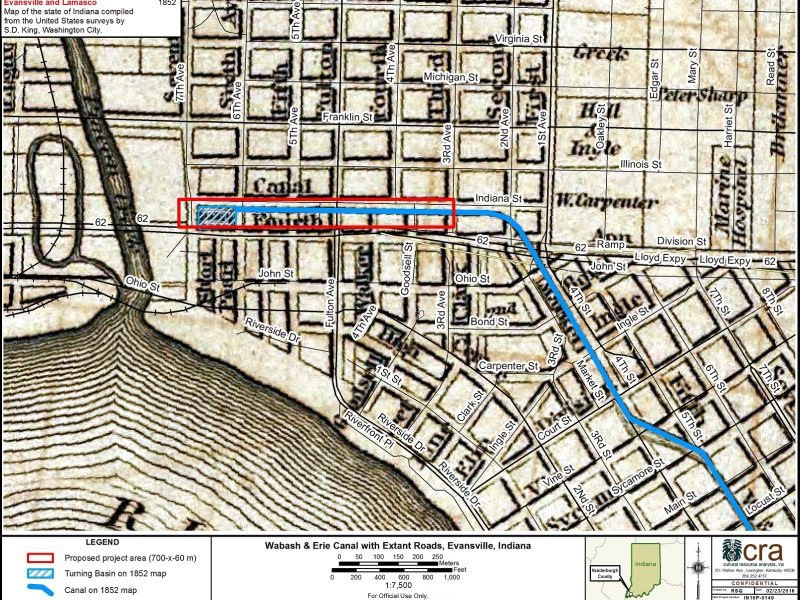A Respected Industry Leader in
Archaeology and Historic Preservation




Established in 1983, Cultural Resource Analysts, Inc. (CRA) is one of the country’s leading full-service cultural resource consulting firms. A certified small business, our success is rooted in our client-focused approach and team of professionals who are dedicated to meeting cultural resource and historic preservation needs across the country. With over 40 years of business, we look forward to building on our history and helping you achieve your goals.
A reputation built on 40+ YEARS of experience
 Backed by an intimate understanding of cultural resource regulations and strong relationships with agencies nationwide, CRA’s dedicated team has helped hundreds of private and public sector clients across the country meet their cultural resource needs.
Backed by an intimate understanding of cultural resource regulations and strong relationships with agencies nationwide, CRA’s dedicated team has helped hundreds of private and public sector clients across the country meet their cultural resource needs.
Most importantly, we recognize the value of creative thinking, timely solutions, and highly-qualified professionals who are capable of addressing the most difficult challenges. From large-scale energy and transportation projects to cemetery investigations and historic preservation initiatives, we proudly carry our reputation for working alongside our client partners to develop creative, achievable strategies that best meet project needs.
Our Services
-
Archaeology
-
Architectural History
-
Historic Preservation
-
Compliance
-
Heritage Tourism
-
Cemetery Studies
-
Geophysics and Remote Sensing
ARCHAEOLOGY
With its multiple offices and broad staff experience, CRA is able to take on archaeological projects in much of the United States and strives to make substantive methodological and theoretical contributions to our discipline within the framework of compliance-related archaeology. Our primary team consists of highly trained archaeologists with expertise in bioarchaeology, zooarchaeology, mortuary studies, geoarchaeology, prehistoric ceramic technology and replication, prehistoric lithic technology and replication, the historic material record, and visual impact analyses. They are supported by staff with specialized training in GIS, spatial analyses, remote sensing, and geophysical survey.

ARCHITECTURAL HISTORY
Offering a unique combination of professional diversity and expertise, CRA’s architectural history team provides the full range of services necessary for the identification, evaluation, management, and interpretation of historic buildings, structures, districts, and landscapes. Backed by our thorough understanding of regulatory frameworks and nationwide experience in producing well-synthesized, defensible documentation, CRA is ready to help whether you need assistance with meeting environmental compliance requirements or completing a special project such as Historic American Building Survey documentation or a National Register of Historic Places nomination.

HISTORIC PRESERVATION
At CRA, we firmly believe that historic preservation is a powerful tool that promotes vibrant, culturally rich communities and enhances quality of life. CRA’s dedicated professionals routinely assist local communities, non-profit organizations, state and federal agencies, architects, and others working to preserve and manage irreplaceable historic properties. Through our work, we’ve acquired nationwide experience in crafting preservation planning tools that serve as catalysts for retaining, promoting, and leveraging historic places as heritage assets that promote community pride, cultural identity, and heritage tourism.

COMPLIANCE
When it comes to historic preservation regulations and requirements, no one is better equipped to professionally carry out your obligations and move your project forward than CRA. For more than 30 years, CRA has worked closely with a wide variety of public and private sector clients to obtain federal, state, and local permits, funding, and approvals. The result of our experience is a solid grasp on the professional methodologies required for proper investigations, a thorough understanding of reviewer expectations, and a comprehension of the intricacies surrounding the review process. With CRA on your team, you can rest assured knowing that the compliance requirements associated with your project will be effectively managed, saving you time and money.

HERITAGE TOURISM
CRA’s public history and historic preservation specialists understand that public educational products are the connecting thread that weave the stories of our past to our heritage assets. We take a personal interest in building partnerships to help you share your story and craft a solid foundation that encourages the public to explore and connect with our cultural history. Whether designing interpretive signage that connects viewers with the landscape in front of them or developing an educational booklet designed to further knowledge of a particular place, CRA is equipped to help you craft your message and engage your audience.

CEMETERY STUDIES
CRA conducts all aspects of cemetery investigations, including identification and documentation, delineation, excavation/disinterment, bioarchaeological analysis, and reinterment. Interdisciplinary approaches, including archaeological survey, geophysical remote sensing, archival research, genealogical research, and use of heavy mechanical equipment may be used to identify the locations of abandoned, neglected, and forgotten cemeteries, to delineate the boundaries of cemeteries with unmarked graves, and to connect individuals to descendants. Most importantly, CRA’s professional staff can serve as your cemetery relocation contractor, taking responsibility for all aspects of the cemetery relocation process.

GEOPHYSICS AND REMOTE SENSING SURVEY
Geophysical survey, also referred to as geophysics or geophyz, harnesses state-of-the-art data collection techniques, including magnetometry, earth conductivity, electrical resistivity, and ground penetrating radar (GPR) to locate and evaluate archaeological sites. CRA has pioneered the integration of these techniques with fieldwork to reduce costs and improve the quality of cultural resource evaluations. Using high speed, high-density data collecting field equipment and up-to-date processing software, we have a continuing commitment to increasing the utility and accuracy of geophysical survey data in both cultural resource projects and non-CRM archaeological research.
At CRA we incorporate the use of remote sensing technologies where and when applicable. In a broad sense, remote sensing encompasses all technologies that allow for the remote collection of data through specialized equipment which includes geophysics. However, given the often different project needs and goals, we separate our non-geophysical work into other areas.
With increased computing power and optimized algorithms Structure-from-motion (SfM) photogrammetry has become easily accessible to professionals and the public alike. This method creates full 3D reconstructions from multiple overlapping images which can be used for aerial or terrestrial mapping of the landscape or close range mapping of objects. SfM can achieve high accuracy and precision comparable to light detection and ranging (Lidar/Laser Scanning). Lidar also can achieve these high levels of accuracy, but requires more specialized equipment, translating to higher costs. We work with our clients to determine which method best fits their project needs.










